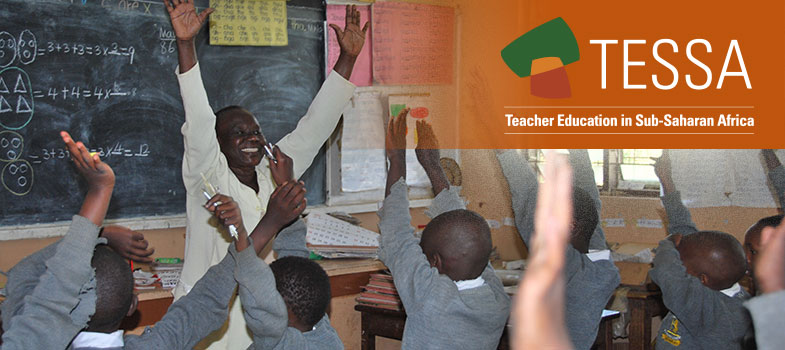2. A cross-curricular approach
As well as encouraging pupils to see symmetry in the world around them, this topic allows pupils to be creative and make symmetrical patterns and objects. It is a good opportunity to enjoy cross-curricular work with art. These activities can be done with very young pupils, and yet be so open-ended that even the oldest pupils can still stretch themselves.
Case Study 2: Creating symmetrical butterflies
Mrs Mudenda wanted to use art to help pupils explore symmetry and had decided to spend a lesson making butterfly pictures with her pupils. She had found two pictures of butterflies, which she showed to her class. She explained how the butterfly has four wings, and how varied the size, shape and colour of these wings can be, but that the wings and their patterns are always symmetrical.
Folding a piece of paper, Mrs Mudenda showed the class how she could cut out a butterfly wing shape, open the page, and have a pair of butterfly wings. She also showed them how they could make butterfly patterns by folding paper with wet paint inside. She invited the class to make their own butterflies, imagining different shapes for the wings and different patterns. The younger pupils used paint blots to colour their butterflies, while the older pupils drew intricate symmetrical patterns.
When the butterflies were finished, Mrs Mudenda hung them from the class ceiling with string. Her pupils were excited by the display and talked about the patterns a lot.
Activity 2: Symmetrical masks
Bring to class some pictures of Makishi masks (see Resource 2: Examples of symmetry in Makishi masks).
Ask pupils if they know which part of Zambia these masks are found in and, if necessary, explain that they are made and used by the Lozi and Lunda people of North-Western Province.
Ask your pupils: Are the masks symmetrical? What pictures/shapes appear on each side of the masks?
Tell your pupils that they are going to design their own Makishi masks. They can choose their own patterns, but the masks should be symmetrical. Discuss ways of copying one half of the design onto the other half. Suggest that they do rough designs before they start working.
You will need enough paper and pencils or paints for each pupil to make a colourful mask, string or elastic to tie the masks on, and pieces of cardboard big enough to make the masks with. You may have to spend some time collecting these resources before you can do the activity but your pupils may be able to help you gather materials together (see Key Resource: Being a resourceful teacher in challenging circumstances [Tip: hold Ctrl and click a link to open it in a new tab. (Hide tip)] ).
Afterwards you can display the masks in a suitable place.
1. Using group work to explore symmetry



